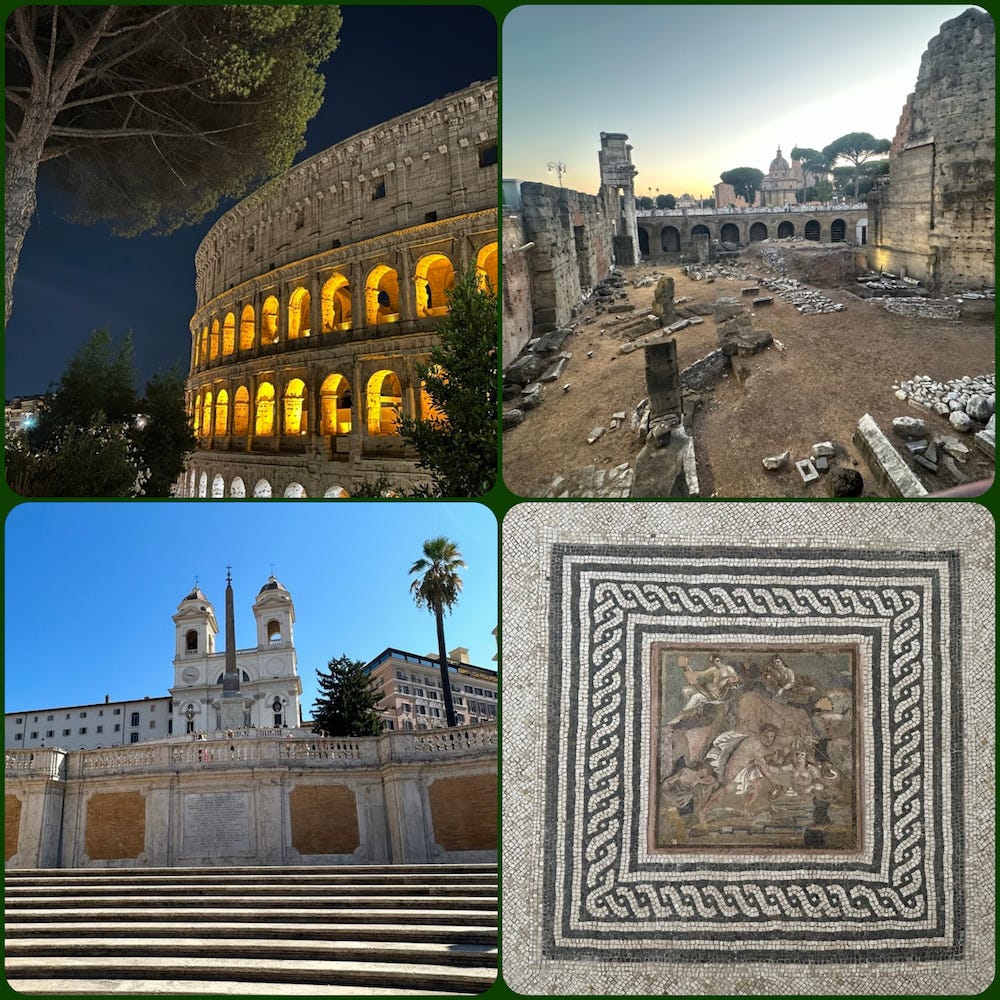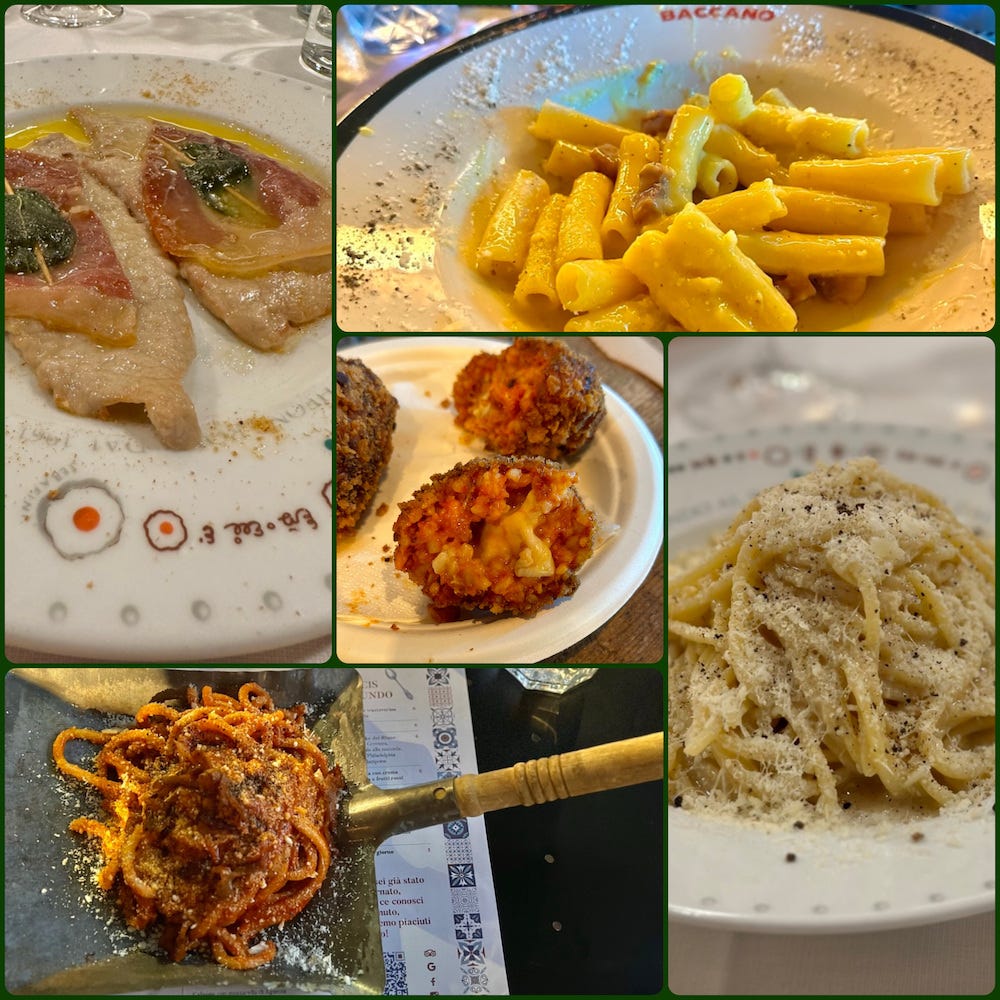When In Rome!
Travel tips if you're headed to the 2023 Ryder Cup and the Eternal City.
Plenty of books, websites, podcasts and shows offer an endless supply of Rome travel tips.
And here’s more advice!
With the Ryder Cup coming to the Eternal City this week, I recently undertook the arduous task of scouring the host city for the best eats, tours, sightseeing and even the limited limited ties to golf.
Absolutely nothing offered in this edition could be earmarked as particularly original, but I do hope to save you a little time, money and wasted meals for whenever you become one of the estimated five million annual visitors. Or, as I learned over a week taking in this magnificent city, the millions making a return trip.
Here are some general tips followed by lots of pics and specific suggestions for dining and gelato. I hope you enjoy and feel free to ask questions or put your Rome advice in the comments.
Guide Books. Not every city is blessed to have so many up-to-date books available for research. I relied heavily on two: Rick Steves’ Rome (Hachette Book Group/$21.99) and Lonely Planet’s Pocket Rome ($13.99) penned by local writers. Both come with enormous amounts of useful information, maps, photos, history, language resources, sage advice and vital prioritizing of absolute must-see sights in each of Rome’s eight history-rich neighborhoods. Even better, you do not need an internet connection to reference these books. You can mark them up and only once did I find something suggested had changed: The Pantheon charges a small admission fee since July after always being free.
Language. I practiced my Italian terminology before the trip and it proved unnecessary. Unlike the French, who make the English-speaking world work to order food or answer a question before growing bored with our butchery of their language revealing they understand you—I don’t fault them btw—Italians routinely get out of in front of you. They have no interest in listening to us butcher their beautiful language. Expect plenty of clear, excellent English out of the gate to save you a lot of time and embarrassing pronunciations. Most “grazies” are met with “your welcome” and buongiorno’s with “hello, how can I help you?” Still, making the attempt at speaking Italian will be appreciated and you’ll feel better for having tried.
Eating. The historic landmarks are amazing and you can’t go wrong with any of the famous and less trafficked sites, but food is not quite as universally supreme. Only once did I dare to try a spot on a heavily trafficked street out of laziness, but prices were more expensive and the food below the quality you’ll find at spots just a few alleyways off main thoroughfares (but still fine). A few rules. If the place has photos on the menu or the food on display out in front, pass. The smaller spots on the back streets survive on better food appreciated by locals who know their primary Roman pastas: carbonara, cacio e' pepe, gricia and amatriciana. There are several incredible restaurants in the main touristy areas of Rome, but just 15-20 minutes of very scenic walking can take you to the Jewish Ghetto, Trastevere and Testaccio, where they dial it up a notch or two in authenticity and quality. Those eateries also tend to be open to half-orders of pasta dishes, making it much easier to order aggressively as you decide who executes the classics best.
Eating Part II. Order what’s on the menu. Just because you are near Caesar’s palace does not mean you should order like you’re at Caesar’s Palace. Hearing my countrymen wanting truffles on top of dishes or explaining “al dente” pasta to their pals almost made my head explode. Thankfully, there were beautiful house wines to numb the pain. Oh, which reminds me: do not hesitate to order the “vino della casa.” They’re outstanding and inexpensive. Compared to dining out in other regions of the world, Rome’s prices are absurdly modest. I suppose when 95% of the restaurants feature Italian food, market forces do their thing.





